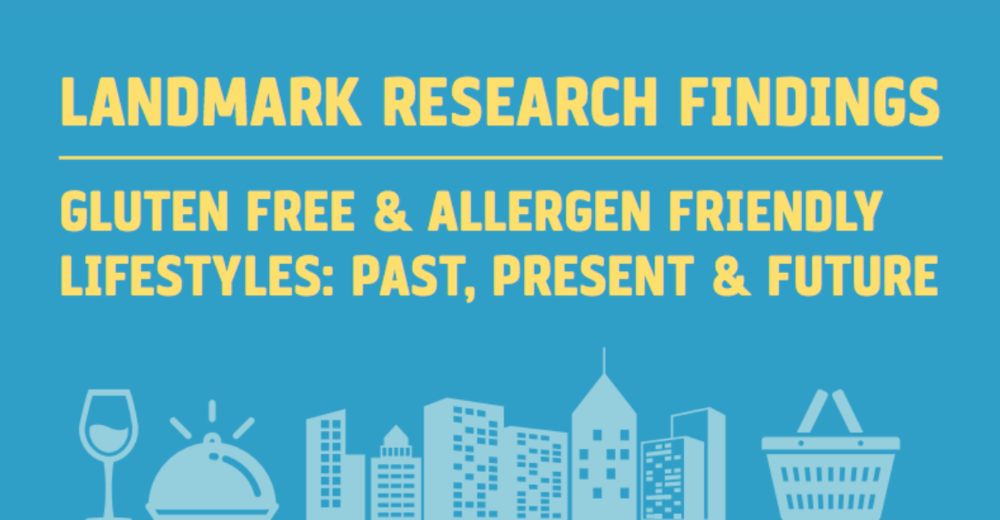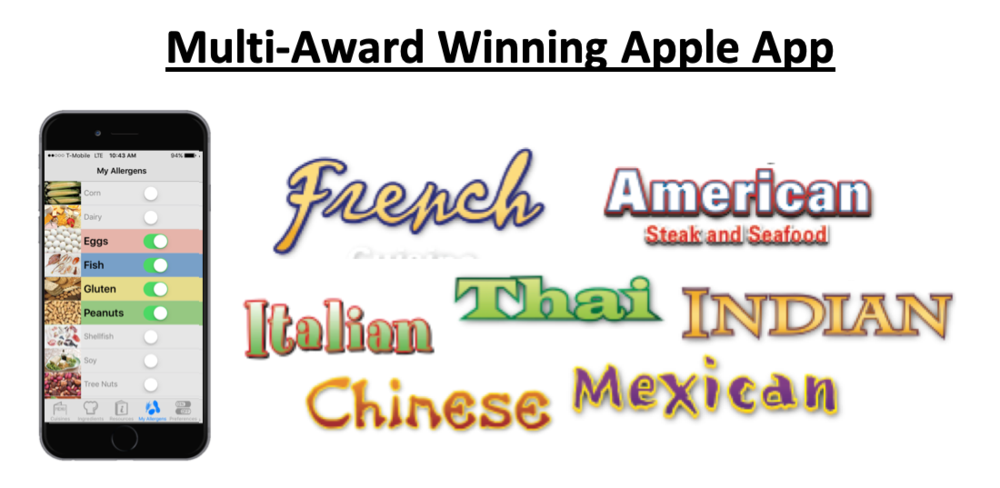Trip Planning
Gluten Free and Food Allergy Travel Tips by Kim Koeller
As Featured in Allergic Living Magazine
After her diagnoses of food allergies (dairy, fish, shellfish, assorted food preservatives), chemical and environmental allergies (goose feathers, ammonia, penicillin, cat and dog hair), and then celiac disease, Kim Koeller, President of GlutenFree and AllergyFree Passport, decided if she couldn’t beat her food concerns and allergies, she had to manage them.
She scoured websites for information, joined 20 international allergy and celiac associations, read books and hundreds of articles. But she found hardly any advice for avid travelers trying to navigate airline meals and restaurants with waiters who speak a different language.
Koeller’s solution? The multi-award winning Let's Eat Out! series of paperback books, ebooks and a mobile app. Co-written with Robert La France, it's dedicated to eating out while managing 10 common allergens. From the road, Kim spoke with Laura deCarufel from Allergic Living Magazine:

Laura: If you gave only one restaurant tip, what would it be?
Kim: Arm yourself with the knowledge needed to safely eat gluten and allergen-free in any restaurant. Always double-check ingredients and preparation techniques, even if something might seem safe.
For example, wheat flour or bread crumbs may be added to a flourless chocolate torte, or risotto might be made with seafood stock, even if the dish itself doesn’t contain seafood or vegetables may be steamed in the same steamer as lobster. Knowing what questions to ask the staff and what modifications can be made to accommodate your dietary needs will empower you to have a safe and enjoyable dining experience.
Laura : What’s the best gluten free & allergy-friendly restaurant meal you’ve ever had?
Kim: That’s really difficult. A sampling of the best would include: In N Out Burger in San Francisco for the first burger I could eat with my hands (it was wrapped in lettuce); Prêt a Manger in London for my first “sandwich without the bread”; Café Marley in Paris for my first entrée served with a superb allergen-free sauce; Brazzaz in Chicago for an amazing Brazilian churrascaria; Il Fornello in Toronto for my first gluten and dairy-free pizza and Bistro 990 in Toronto for an incredible allergy-free experience.

Laura: Allergic people are often fearful of foreign travel. Were you ever intimidated?
Kim: I was daunted by eating out around the corner, especially after I was diagnosed with celiac disease and multiple food allergies. But I was working as an international management consultant, and by that time, I’d already flown over a million miles, eating 75 percent of my meals away from home in over 20 countries on four continents. I wasn’t willing to give up what I loved to do, so I needed to figure out how to eat gluten and allergy-free food anywhere in the world.
Laura: What’s been your worst travel food experience?
Kim: I’ve gotten sick from dishes with allergens hidden in various ingredients, or because of preparation techniques such as wheat flour being added to omelettes, steaks that were finished in butter, sorbets with whey stabilizers, etc. But out of all my experiences, I think the worst one was in Washington, D.C.
Some colleagues and I went to a restaurant that refused to serve me anything out of fear of liability. Not only was this shocking and embarrassing – it infuriated me. Instead of leaving in frustration, one of my colleagues politely asked, “Can’t you just make her a salad with fresh vegetables?"
Laura: A lot of parents of celiac and allergic kids think foreign travel is too risky. What do you say to them?
Kim: I understand & empathize. That said, I believe it’s really important for kids and adults to feel comfortable with traveling. It’s all about education, communication and preparation. Having an understanding of food ingredients, how food can be prepared and what techniques require attention is key. Cooking oil, for example, has serious potential for cross-contamination.























